by Contributed | Sep 24, 2020 | Azure, Technology, Uncategorized
This article is contributed. See the original author and article here.
Initial Update: Thursday, 24 September 2020 13:10 UTC
We are aware of issues within Application Insights and are actively investigating. Some customers may experience data access issue and issues with missed or delayed Log Search alerts in South UK and North Europe regions.
-
Work Around: None
-
Next Update: Before 09/24 15:30 UTC
We are working hard to resolve this issue and apologize for any inconvenience.
-Rama
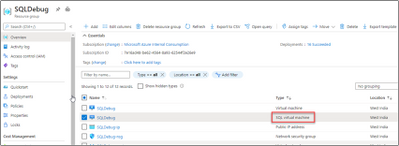
by Contributed | Sep 24, 2020 | Azure, Technology, Uncategorized
This article is contributed. See the original author and article here.
Currently Azure marketplace SQL Images are only available in English locale. If you want to change your SQL locale to any other than English, then you can deploy a virtual machine that contains SQL Server initially. We will walk through the steps involved in changing SQL Server language from English to Japanese in this blog.
SQL Server database engine executable file is common to all languages, you can store, extract, and search Japanese data without having to perform the following steps. The default collation of the database can be specified when the database is created. You can explicitly specify the collation of a table column, or if not, the collation of the database is inherited.
If you want to manage from SQL Server Management Studio with a Japanese UI on a remote machine, you do not need to do the following. If you only need the Japanese user interface for administrative tools, you will need to Change locale for SQL Server. The following is an example of SQL Server 2016, but the procedure remains almost the same for other versions of SQL Server:
Uninstall SQL Resource Provider
From the Azure Portal, navigate to your resource group. Click on your “SQL virtual machine” Resource.
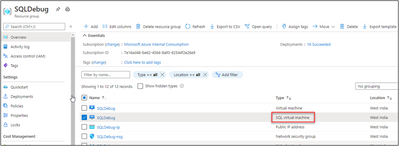
Delete SQL Virtual Machine resource. We are not deleting the Virtual Machine here.

Uninstall SQL Server and its related components.
-
To start the Uninstall process, we will Uninstall SQL instance. Review the list of features and components that will be uninstalled so you can install those when you install the new instance.
-
We need to uninstall “Data Tier Application Framework” and “Microsoft Visual Studio Shell” related packages from programs and features.
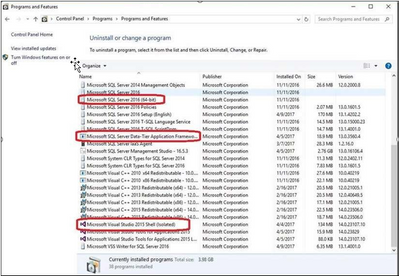
At the end of this step there are no SQL instance, features or components on this machine. Everything has been uninstalled.
Configure Operating System to Support Localized Versions
Before you can install the Japanese version of SQL Server on an English operating system, you must change the language settings of the operating system. Please follow the below steps:
-
User interface settings for the operating system
-
User locale settings for the operating system
-
System locale settings
To change the operating system user interface setting
-
If not already installed, install the operating system MUI that matches your localized version of SQL Server.
-
In Control Panel, open Regional and Language Options.
-
On the Languages tab, for Language used in menus and dialogs, select a value from the list. This setting will affect the user interface language of SQL Server, so it must match your localized version of SQL Server.
-
Click Apply to confirm the change, and OK to close the window.
To change the operating system user locale setting
- If not already installed, install the operating system MUI that matches your localized version of SQL Server.
-
In Control Panel, open Regional and Language Options.
-
On the Regional Options tab, for Select an item to match its preferences, select a value from the list. This setting will affect culture-specific data formatting.
-
Click Apply to confirm the change, and OK to close the window.
To change the system locale setting
-
If not already installed, install the operating system MUI that matches your localized version of SQL Server.
-
In Control Panel, open Regional and Language Options.
-
On the Advanced tab, for Select a language to match the language version of the non-Unicode programs you want to use, select a value from the list. This setting will allow SQL Server Setup to choose the best default collation for your SQL Server installation.
-
Click Apply to confirm the change, and OK to close the window.
Installing the SQL Server with your preferred Locale/Language
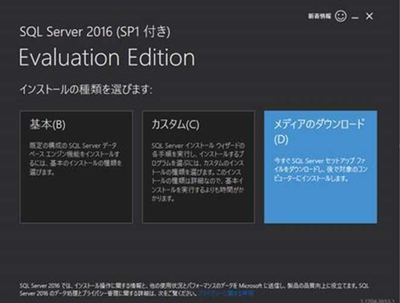
-
Set the package type to ISO and download it.
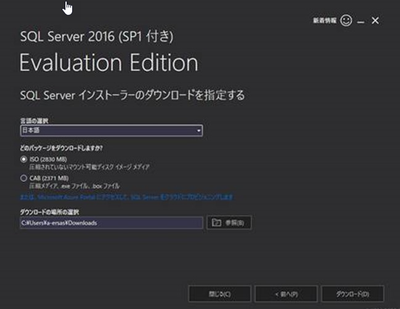
-
You will also need a Microsoft account to download. After downloading, mount the appropriate ISO file and load it into the DVD drive.
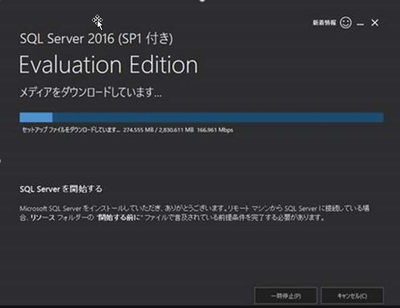
-
On the SQL Azure VM, open C:/SQLServer_13.0_Full/x64/DefaultSetup.ini.
DefaultSetup.ini
********************
SQL Server 2016 Configuration File
[OPTIONS]
PID:”XXXXX-XXXXX-XXXXX-XXXXX-XXXXX”
PCUSOURCE: “.
********************
The XXXXX becomes the actual product key which we need to use while installing. Start the installation of the Japanese version of SQL Server 2016. (By default, it is mounted on the E drive, so start setup from here.) )
On the Product Key page, you can change the Edition from Evaluation by entering the product key.
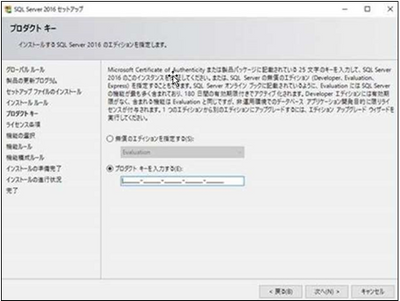
For more information about installing SQL, please check Install SQL Server 2016 from the Installation Wizard (Setup)
Reinstall Resource Provider
Install SQL Resource Provider . This will sync your billing and the SQL Version/Edition we installed with the Azure Portal.
References
Install non-English language versions of SQL Server Management Studio (SSMS)
Microsoft 2012 SP1 Japanese locale Evaluation
Microsoft 2014,2016,2017,2019 Japanese locale Evaluation Version
Local Language Versions in SQL Server
by Contributed | Sep 24, 2020 | Azure, Technology, Uncategorized
This article is contributed. See the original author and article here.
Final Update: Thursday, 24 September 2020 09:50 UTC
We’ve confirmed that all systems are back to normal with no customer impact as of 9/24, 09:40 UTC. Our logs show the incident started on 9/24, 09:00 UTC and that during the 40 minutes that it took to resolve the issue some customers may have experienced failure accessing live metrics data.
-
Root Cause: The failure was due to configuration changes in one of our dependent service.
-
Incident Timeline: 40 minutes – 9/24, 09:00 UTC through 9/24, 09:40 UTC
We understand that customers rely on Application Insights as a critical service and apologize for any impact this incident caused.
-Harshita
by Contributed | Sep 24, 2020 | Azure, Technology, Uncategorized
This article is contributed. See the original author and article here.
If Azure Kubernetes Services (AKS) was the first Kubernetes based home on Azure that Windows containers have, I am so happy now we got a second brand new home. That is AKS on Azure Stack HCI announced at Ignite this week! As the driver to build and execute the product strategy helping customers lift and shift, and modernize traditional Windows apps with Windows containers, I am thrilled we are bringing AKS on Azure Stack HCI to customers for on-prem or hybrid needs of leveraging Windows containers.
As a starter, from the official doc here, “Azure Kubernetes Service on Azure Stack HCI is an on-premises implementation of Azure Kubernetes Service (AKS), which automates running containerized applications at scale. Azure Kubernetes Service is now in preview on Azure Stack HCI, making it quicker to get started hosting Linux and Windows containers in your datacenter.”
I had the honor participating as an SME in a few Digital Breakout sessions and the Ask the Experts sessions related to AKS on Azure Stack HCI this Ignite. I was blown away by the strong interest from the community. Lots of great questions were asked. To make it easy, I compiled the following relevant links for folks who wanted to get started:
General materials:
Ignite Sessions:
If you are interested in learning more about WAC tooling related to containers, check out 2 previous blogs from Vinicius:
Have fun at Ignite. Have fun trying out Windows containers on AKS on Azure Stack HCI. Keep your questions coming in. Share your feedback with us. Thank you!
Weijuan
Twitter: @WeijuanLand
Email: win-containers@microsoft.com
by Contributed | Sep 23, 2020 | Azure, Technology, Uncategorized
This article is contributed. See the original author and article here.
Microsoft is updating Azure services in a phased manner to use TLS certificates from a different set of Certificate Authorities (CAs) beginning August 13, 2020 and concluding approximately on October 26, 2020. We expect that most Azure Storage customers will not be impacted; however, your application may be impacted if you explicitly specify a list of acceptable CAs (a practice known as “certificate pinning”). This change is limited to services in public Azure cloud and US Government cloud. There are no changes in other sovereign clouds like Azure China.
This change is being made because the current CA certificates do not comply with one of the CA/Browser Forum Baseline requirements. This was reported on July 1, 2020 and impacts multiple popular Public Key Infrastructure (PKI) providers worldwide. Today, most of the TLS certificates used by Azure services are issued from the “Baltimore CyberTrust Root” PKI.
Azure Storage services will remain chained to the Baltimore CyberTrust Root*, but the TLS server certificates will be issued by new Intermediate Certificate Authorities (ICAs) starting October 26, 2020.
If any client application has pinned to an Intermediate CA rather than the Baltimore CyberTrust Root, immediate action is required to prevent disruption to connectivity to Azure Storage.
* Other Azure service TLS certificates may be issued by a different PKI.
Certificate Renewal Summary
The table below provides information about the certificates that are being rolled. Depending on which certificate your service uses for establishing TLS connections, action may be needed to prevent loss of connectivity.
|
Certificate
|
Current
|
Post Rollover (Oct 26, 2020)
|
Action
|
|
Root
|
Thumbprint: d4de20d05e66fc53fe1a50882c78db2852cae474
Expiration: Monday, May 12, 2025, 4:59:00 PM
Subject Name:
CN = Baltimore CyberTrust Root
OU = CyberTrust
O = Baltimore
C = IE
|
Not Changing
|
None
|
|
Intermediates
|
Thumbprints:
CN = Microsoft IT TLS CA 1
Thumbprint: 417e225037fbfaa4f95761d5ae729e1aea7e3a42
—————————————————————-—————–
CN = Microsoft IT TLS CA 2
Thumbprint: 54d9d20239080c32316ed9ff980a48988f4adf2d
—————————————————————-—————–
CN = Microsoft IT TLS CA 4
Thumbprint: 8a38755d0996823fe8fa3116a277ce446eac4e99
—————————————————————-—————–
CN = Microsoft IT TLS CA 5
Thumbprint: Ad898ac73df333eb60ac1f5fc6c4b2219ddb79b7
—————————————————————-—————–
Expiration: Friday, May 20, 2024 5:51:28 AM
Subject Name:
OU = Microsoft IT
O = Microsoft Corporation
L = Redmond
S = Washington
C = US
|
Thumbprints:
CN = Microsoft RSA TLS CA 01
Thumbprint: 703d7a8f0ebf55aaa59f98eaf4a206004eb2516a
—————————————————————-—————-
CN = Microsoft RSA TLS CA 02
Thumbprint: b0c2d2d13cdd56cdaa6ab6e2c04440be4a429c75
—————————————————————-—————-
Expiration: Tuesday, October 8, 2024 12:00:00 AM;
Subject Name:
O = Microsoft Corporation
C = US
|
Required
|
Note: Intermediate certificates are expected to change frequently. We recommend not taking dependencies on them and instead pinning the root certificate as it rolls less frequently.
Action Required
- Search your source code for the thumbprint, Common Name, and other cert properties of any of the 4 Microsoft IT TLS CAs listed above. here. If there is a match, then your application will be impacted, immediate action is required:
- To resolve this problem, update the source code to include the new intermediate CAs. To continue pinning intermediaries, replace the existing certificates with the new intermediates CAs:
- Microsoft RSA TLS CA 01
(Thumbprint: 703d7a8f0ebf55aaa59f98eaf4a206004eb2516a)
- Microsoft RSA TLS CA 02
(Thumbprint: b0c2d2d13cdd56cdaa6ab6e2c04440be4a429c75)
Validation
We recommend performing some basic validation to mitigate any unintentional impact to your application. We will provide a test environment on demand for your convenience to try out before we roll these certificates in production environments.
Support
If you have any technical questions on implementing these changes or help in performing validation in the test environment, please open a support request with the options below and a member from our engineering team will get back to you shortly.
- Issue Type: Technical
- Service: Azure Storage
- Problem type: Connectivity
- Problem subtype: Dropped or terminated connections
Additional Information
Microsoft wide communications: To broadly notify customers, Microsoft had sent a Service Health portal notification on Aug 3rd, 2020 and released a public document that includes timelines, actions that need to be taken, and details regarding the upcoming changes to our Public Key Infrastructure (PKI).



Recent Comments